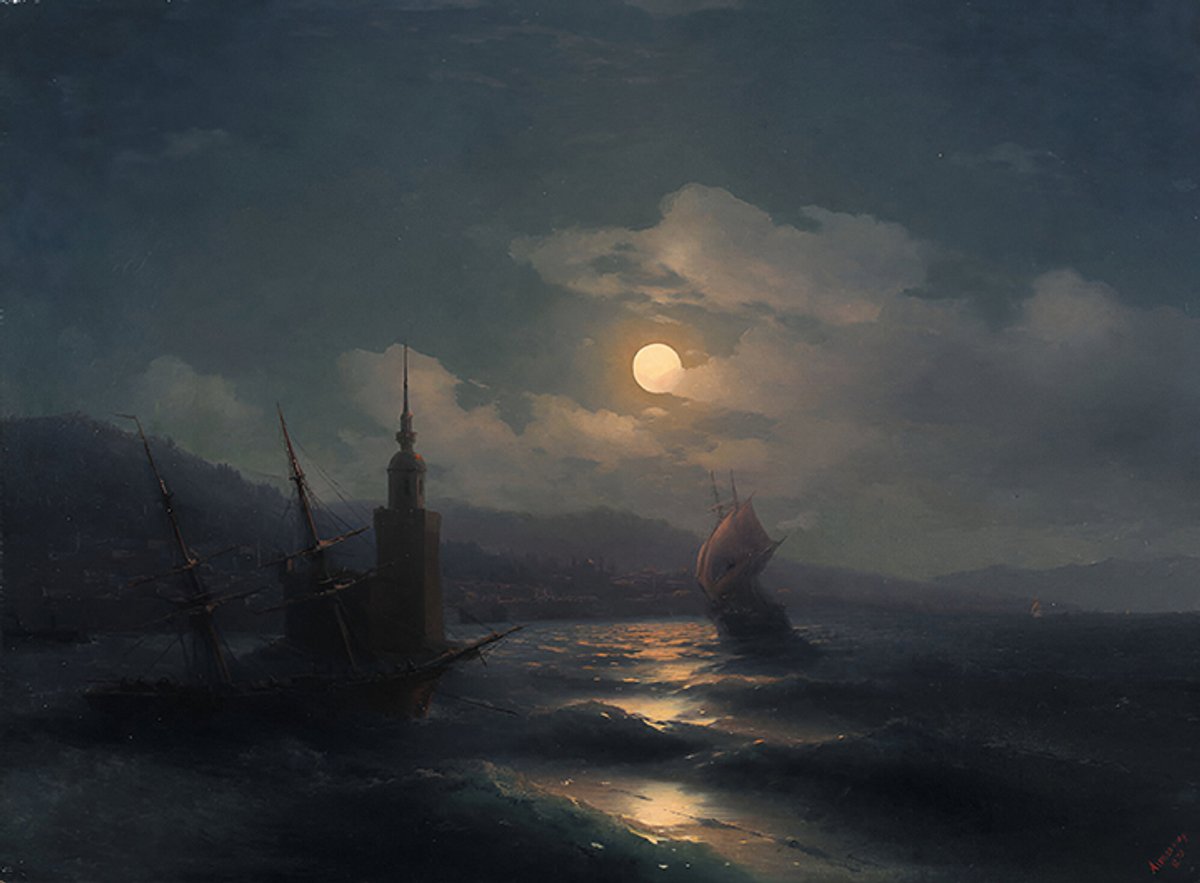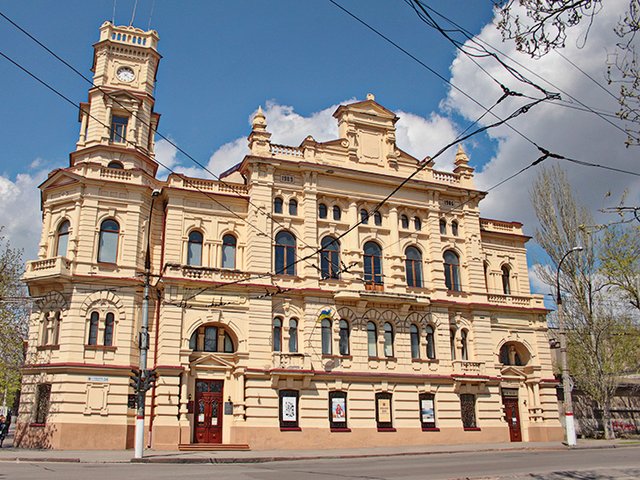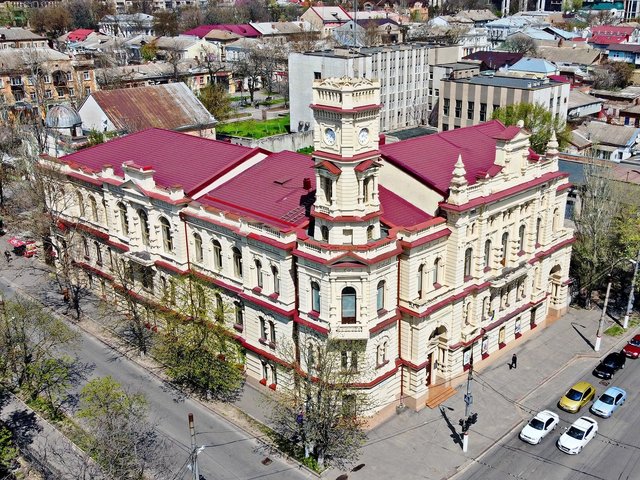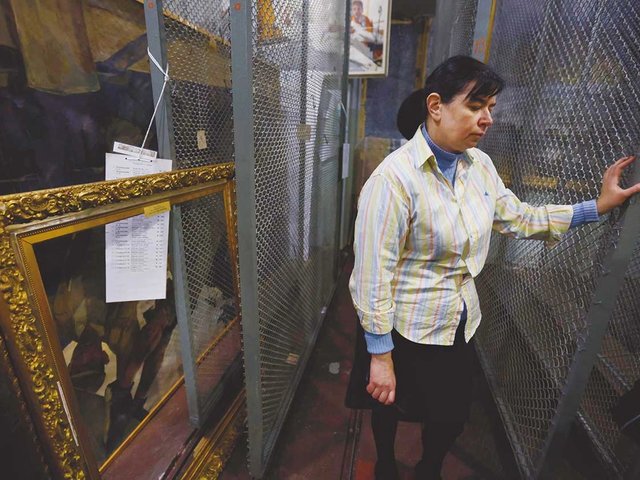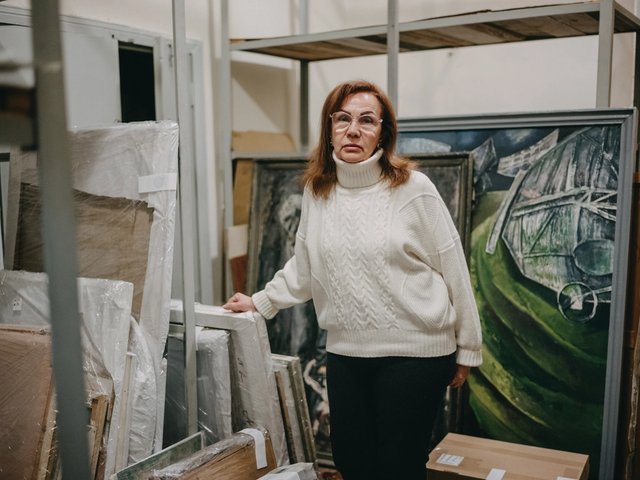For more than a decade since Russia’s illegal annexation of Crimea in March 2014, Russia and Ukraine have battled over the atmospheric seascapes of the celebrated 19th-century painter Ivan Aivazovsky.
Of Armenian descent, Aivazovsky (1817-1900) spent most of his life in Feodosia, the Black Sea port in Crimea where he founded a museum to display his art in 1880. He studied and taught in imperial St Petersburg and exhibited widely, gaining recognition outside the Russian Empire.
The Kremlin describes the Crimean-born artist as a Russian national symbol. Ukrainian art historians such as Oksana Semenik, who uses his Armenian name, and even President Volodymyr Zelensky, accuse Russia of figuratively and literally looting his Ukrainian heritage.
In annexing Crimea, Russia effectively appropriated the Aivazovsky National Art Gallery in Feodosia, with its collection of more than 400 paintings by the artist. Against the wishes of Ukrainian authorities, in 2014 it recalled other works by Aivazovsky and other artists that were on loan from the Simferopol Art Museum in Crimea to an exhibition at the Kuindzhi Art Museum in Mariupol, south-eastern Ukraine. Mariupol and the surrounding Donetsk region were illegally annexed following Russia’s February 2022 full-scale invasion of Ukraine.
Russia loans works to China
In 2016 Ukraine’s culture ministry condemned Moscow’s State Tretyakov Gallery for displaying works from Feodosia at an exhibition marking the artist’s 200th birthday. The Tretyakov recently loaned works by Aivazovsky and Arkhyp Kuindzhi, another 19th-century painter from Ukraine, to Beijing’s Capital Museum for an exhibition titled The Soul of Russia (closed in December).
In 2024 the Russian government completed a renovation of the Feodosia museum for the tenth anniversary of Crimea’s annexation, a project estimated at Rb870m ($8.5m) that was described by the Russian head of Crimea, Sergei Aksyonov, as a “national treasure” favoured by Vladimir Putin.

Aivazovsky’s View of the City of Odesa (1840-50), which Ukraine says was stolen from the Kherson Art Museum
Courtesy of Kherson Art Museum
Since Russia’s invasion of Ukraine, it has appropriated more Aivazovsky paintings from museum collections in occupied Ukrainian cities and transferred them to Simferopol. Ukraine’s military intelligence currently lists five works by the artist, including View of the City of Odesa (1840-50) from the Kherson Art Museum, on the relaunched stolen heritage catalogue on its War and Sanctions website.
However, there is some confusion about which Aivazovsky works were taken by Russia. In February 2024, Ukraine’s former prosecutor general of Crimea, Gyunduz Mamedov, claimed in a post on X that a Russian auction house was selling a stolen Aivazovsky seascape titled Moonlit Night. He wrote that the painting of two ships on stormy waters, which fetched Rb92m ($885,000), was among 52 items that were illegally transferred by Russia to the Simferopol Art Museum in 2014 and were reported to Interpol as stolen in 2017. The director of Simferopol’s Central Museum of Taurida, Andrei Malgin, is under EU and Swiss sanctions for harbouring art looted by Russian forces in Kherson in 2022.
‘Full provenance documentation’
Moscow Auction House tells The Art Newspaper that the auctioned Aivazovsky painting was not the Simferopol seascape, but a different work from 1878, left untitled by the artist, but given the name Full Moon Night during certification and accompanied by “full provenance documentation”. The auction house said the painting was purchased at an auction house in Sweden in 2008 before entering two private collections in Russia, and that it was displayed at the State Russian Museum in St Petersburg in 2017
The Art Newspaper has seen the catalogue of the 2008 sale in Sweden, which used the title A Corner of Constantinople from the Sea by Moonlight, and confirmed that the painting appears identical to the one auctioned in Moscow. Konstantin Akinsha, an expert on Ukrainian art (and contributor to The Art Newspaper), provided visual evidence matching the frame of the auctioned painting in Moscow to the work exhibited at the State Russian Museum in 2017, as did a television news report, further supporting Moscow Auction House’s claim.
Multiple moonlit scenes
Aivazovsky was a prolific artist who produced numerous moonlit seascapes. A painting called Moonlit Night (1882) is listed on Russia’s online state database of museum objects as part of the Simferopol museum’s collection, though photographs of it show clear differences from the Moscow painting. A 2018 report by the Crimean service of the US-funded broadcaster Radio Liberty identified Moonlit Night among paintings that were illegally taken from Mariupol’s Kuindzhi Art Museum during the Russian annexation of Crimea. The Interpol Stolen Works of Art Database also lists Moonlit Night in Simferopol among three works by Aivazovsky stolen from Ukraine.
During that operation, which was described as “heroic” by Russian state media, three men affiliated with Russia’s intelligence services spirited the paintings from Mariupol to Simferopol using Moldovan licence plates before Ukrainian authorities could claim them.
Illegal transfers
Ukraine’s now-defunct stolen heritage database—posted online by the National Agency on Corruption Prevention in 2023 and suspended in March 2024—previously listed 31 works illegally transferred by Russia from Mariupol. The London-based Art Loss Register (ALR) confirmed to The Art Newspaper that it had the same information in its database of stolen art.
The latest iteration of the Ukrainian database, updated last month, lists 44 works taken from the Kuindzhi Art Museum (29 of them in 2014), including Moonlit Night. While the catalogue is currently limited to 797 stolen objects from four museums and 16 archaeological sites, it provides an important map of the geographical scale of looting.
The Simferopol museum now holds Ukrainian heritage alongside museum paintings from Aachen, Germany that were seized by the Red Army in 1945 and stored in secret sites for decades. Irina Tarsis, the founder of the New York- and Zurich-based Center for Art Law, tells The Art Newspaper that Russia’s actions in Ukraine are “to some degree duplicative of what transpired with the trophy brigades taking art from German repositories to the Soviet Union”.


